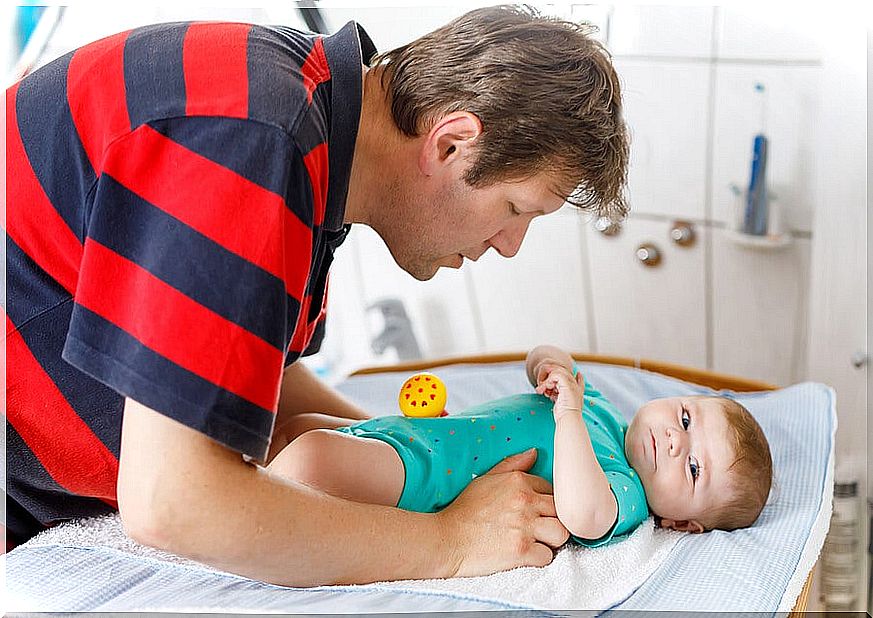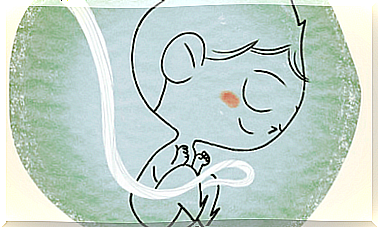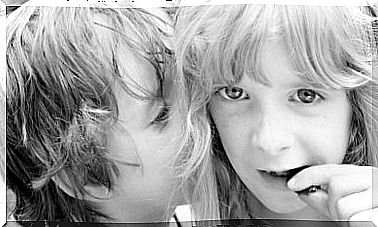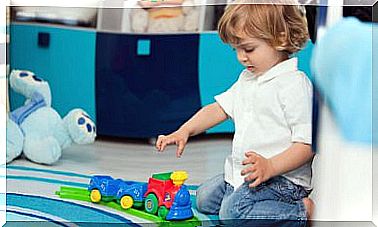What Is Cryptorchidism?

Cryptorchidism is a genital problem related to an undescended or poorly descended testicle. If it is not treated in time, it can be enormously harmful for the child in the future.
This developmental disorder of the genitalia does not show up on prenatal ultrasound before 28 weeks’ gestation. For this reason, to detect it in time, a transinguinal migration must be carried out.
What are the causes of the appearance of cryptorchidism?
Cryptorchidism is one of the most common disorders in children and the factors of its appearance are very varied, because there is no exact cause. These are some of the most common elements that indicate that a child could be suffering from this disorder:
- Low birth weight: this occurs mainly when the baby has a premature birth. Weight is considered low when it is less than 2.5 kilograms.
- Premature birth: these are the cases in which the baby is born before the mother reaches 37 weeks of pregnancy.
- Small for gestational age: the baby is considered to be smaller than it should be.
- Maternal exposure to estrogens during the first month of pregnancy: This is due to normal physical changes that occur during the first month of pregnancy.
- Intra-abdominal pressure: refers to the pressure that occurs within the abdominal cavity above 10 centimeters.
- Abdominal wall malformations: they are a group of congenital malformations that represent heterogeneous defects that cause the herniation or evisceration of one or more organs of the abdominal cavity.

Cryptorchidism diagnosis
The most common way to know the diagnosis of this disorder is through a doctor’s examination and evaluation. This is done by palpating the scrotal bag.
If the bag is empty, the index finger is traced caudally over the inguinal canal, making an up-and-down movement to confirm whether the testicle is in the path. If the testicles have not descended correctly or are ectopic, the probability of detecting it will be 80%.
This evaluation must be performed routinely and, although it is very effective, what is known as a false cryptorchidism can occur, which is caused by a cremasteric reflex. Sometimes an abdominal ultrasound, CT, or MRI may be done to locate the testicle.
Types of cryptorchidism
There are several types of cryptorchidism. The pediatrician, according to his evaluation, will be the one in charge of determining the treatment to follow depending on the results.
These are the types of this disorder that exist:
- Elevator testicle : This is reflected when the testicle is not in the scrotum, but can be lowered manually; requires continuous evaluation.
- Ectopic testicle : occurs when the testicle is outside the inguinal canal; it generally appears subcutaneously.
- Acquired Undescended Testicles: At first, they were not in the scrotum, but they went down during the first year of life and then back up. This type of disorder requires follow-up up to 10 years of age.
- Absent testicles : In this type of disorder, the testicle is not in the scrotum and is not in the inguinal canal or abdomen. In this case, ultrasound or surgical exploration is required.
- True cryptorchidism: occurs when the testicle is not in the scrotum and can be felt in the inguinal canal, but it is not possible to lower it.
Cryptorchidism treatment
Most cryptorchidias resolve spontaneously in the first year, so they only recommend observing the child and periodically checking if the testicles descend on their own. If this does not occur after one year of age, treatment should be considered, which can be hormonal or surgical.
Hormonal treatment
Today, this treatment is less common. It consists of the intramuscular administration of a hormone that favors the descent of the testicle to the scrotum.
Its negative point is that its results are not always effective, because it is most likely that after the therapy the testicle will ascend again. In addition, this type of treatment is not without side effects.

Surgical treatment
This is the most effective treatment today. It consists of the descent of the testicle to the scrotum through an intervention called orchidopexy. It is recommended that it be done before 18 months of age; the chances of success of this intervention are quite high.
Complications of cryptorchidism
If this disorder is not treated in time, it can significantly affect the health of the little one. Therefore, it is recommended to act quickly in case of suspecting that the child has this anomaly in his genital area. These are some of the complications that can occur:
- Infertility
- Increased risk of testicular cancer.
- Testicular torsion.
- Inguinal hernia.
Cryptorchidism can be really harmful for children if it is not treated in time, so parents should take special care if there is a suspicion that the little one suffers from this disorder. Communicating quickly with the family doctor will allow to make the pertinent controls.










